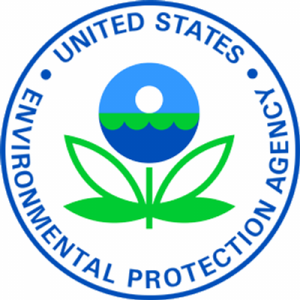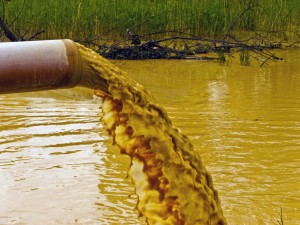(Almost) Cleaner Water
The Permitting Process: Good Business
Expansion goes hand in hand with any kind of business development. In order
to expand fiscally, businesses need to grow physically as well. But before any large-scale type of development can begin, it needs to go through the lengthy
 permitting process and get an “okay” from the government. Although it’s a hassle for developers, this process exists to prevent over development and protect open spaces and natural areas.
permitting process and get an “okay” from the government. Although it’s a hassle for developers, this process exists to prevent over development and protect open spaces and natural areas.
A variety of laws in the U.S. govern this process, one of which is the Clean Water Act (CWA). This law regulates development in and around all federally owned waters and establishes the criteria for classifying water bodies as public or private property. In August 2015, the Environmental Protection Agency (EPA) set into action the Clean Water Rule (CWR) – new guidelines under the CWA – to clarify the definition of waters that are considered federal property. After the law was enacted, the U.S. Court of appeals for the Sixth Circuit stayed the law nationwide in June 2015, after only four months of being in effect. Although seemingly insignificant, it turns out this rule could have a much larger impact than was initially anticipated.
What’s Changed?
So what actually happened when the CWR was introduced? The main goal of this rule was to clarify the definition of a ‘significant nexus .’ Under the CWA, a water body needs to have a substantial connection (aka significant nexus) to a traditional navigable water (large rivers, canals, or an ocean). While easy enough to understand on paper, when put into practice this term caused a number of questions to arise like: What defines significant? Does it have to be a physical connection, or is a biological or ecological one enough? Do perennial streams and temporary bodies of water qualify? And depending on the person answering the question, the answer might be This made it hard to come up with a consistent way of classifying water bodies.
.’ Under the CWA, a water body needs to have a substantial connection (aka significant nexus) to a traditional navigable water (large rivers, canals, or an ocean). While easy enough to understand on paper, when put into practice this term caused a number of questions to arise like: What defines significant? Does it have to be a physical connection, or is a biological or ecological one enough? Do perennial streams and temporary bodies of water qualify? And depending on the person answering the question, the answer might be This made it hard to come up with a consistent way of classifying water bodies.
In an attempt to clarify some of these questions, the new CWR classifies waters that the government can take jurisdiction over into 8 categories.
- Categories 1, 2, 3: Traditional U.S. waters – navigable waters, interstate waters, and territorial seas, respectively1.
- Category 4: Waters that have previously been established as federal property. In other words, waters that are ‘grandfathered in1.’
- Category 5: Tributaries – bodies of water that have distinct physical characteristics indicating substantial flow, and connect physically with a traditional navigable water1.
- Category 6: Adjacent waters – wetlands, ponds, lakes, oxbows, and impoundments within 1500 feet of a traditional navigable water, that do not have to physically be connected1.
- Categories 7, 8: Waters that require a case specific analysis – Includes those that may have a significant biological or ecological connection and five distinct types of water bodies: prairie potholes, Carolina and Delmarva bays, pocosins, western vernal pools in California, Texas coastal prairie wetlands1.
The Public Reacts
So it’s all good, right? Making a small revision to permitting law shouldn’t ruffle too many feathers. But it did. Although the regulatory process is more streamlined with clearer guidelines, many people were not thrilled with this update. Looking more closely at the rule reveals that virtually any body of water can now be classified as federal property, meaning developing near water bodies becomes a lengthier and more expensive process. Only environmental consultants – not the individual developers – would truly be able to say if a water body was public or private property. To avoid lawsuits, developers would have to hire these consultants, requiring them to spend more money and time in the pre-project stage than in the actual development stage. Others who disapprove say this borders on a takings issue. They argue that the federal government is overextending its power of eminent domain, taking water that should be considered private property.
Supporters of this rule, on the other hand, are thrilled. The eight clear categories help eliminate grey areas that existed within the old laws, and clearly define what a federal body of water is for the first time in history. This newfound clarity protects a substantial amount of the country’s fresh water, which is becoming an increasingly valuable resource given climate change  impacts like drought, sea level rise, stronger storms, and warmer temperatures. And with more that 117 million Americans drawing drinking water from streams that may not be protected under the old CWA2, this new law ensures that more of these water sources would be safe and clean for humans to use. The EPA was aiming to ensure that polluters who knowingly threaten freshwater would be held accountable for their actions. This means cleaner, more available water for people all across the U.S.
impacts like drought, sea level rise, stronger storms, and warmer temperatures. And with more that 117 million Americans drawing drinking water from streams that may not be protected under the old CWA2, this new law ensures that more of these water sources would be safe and clean for humans to use. The EPA was aiming to ensure that polluters who knowingly threaten freshwater would be held accountable for their actions. This means cleaner, more available water for people all across the U.S.
What Happens Now?
So is this law actually a good thing, or a bad thing? At this point it’s up to the courts to decide if the EPA is extending its reach too far and infringing upon property rights. Whichever way the Court of Appeals rules, the decision will definitely be appealed to the Supreme Court. That could mean months, if not years, before a final determination is made. So until then we’ll continue operating within the familiar grey area. When the justice department does make the decision, they will set an important precedent regarding U.S. water law, no matter what the verdict is. But regardless of the final ruling, the proposition of this rule alone is a step towards a cleaner, more sustainable society.
References
1. Clean Water Rule: Definition of “Waters of the United States” epa.gov. Accessed 2 February 2016. http://www.epa.gov/sites/production/files/2015-06/documents/epa-hq-ow-2011-0880-20862.pdf.
2. “EPA Broadens Clean Water Regulations.” USNews. Accessed 2 February 2016. http://www.usnews.com/news/articles/2015/05/27/epa-expands-clean-water-regulations.







